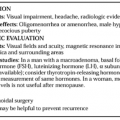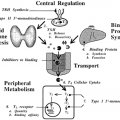INSTRUMENTATION
Part of “CHAPTER 34 – THYROID UPTAKE AND IMAGING“
SCINTILLATION SCANNER AND CAMERA
The rectilinear scanner was the first nuclear imaging instrument devised.17 This highly focused detector views a small area of the organ at a time; it images successive areas by a transverse back-and-forth motion until the entire organ is imaged. Because the detector head points in only one direction, oblique and lateral views of the thyroid are difficult to obtain. Image resolution is relatively poor compared with that of contemporary scintillation cameras. The principal advantage of the rectilinear scanner is the ability to obtain a full-sized 1:1 image, which facilitates precise in vivo location of neck masses. However, this instrument is not readily available presently.
The scintillation camera is the standard imaging instrument in nuclear medicine.18 The detector is capable of viewing either a small region of interest such as the thyroid, or a large area such as the abdomen or chest, with the use of appropriate collimators (see later). In addition, the detector can be easily rotated for lateral and oblique views.
Stay updated, free articles. Join our Telegram channel

Full access? Get Clinical Tree





